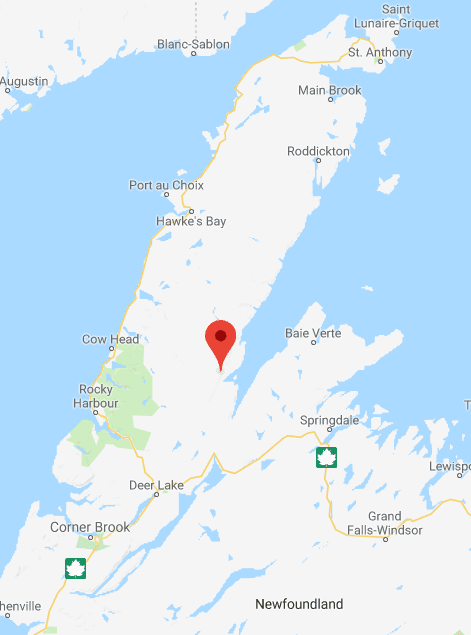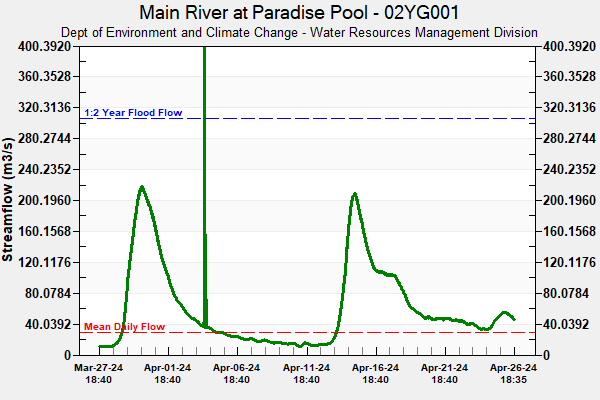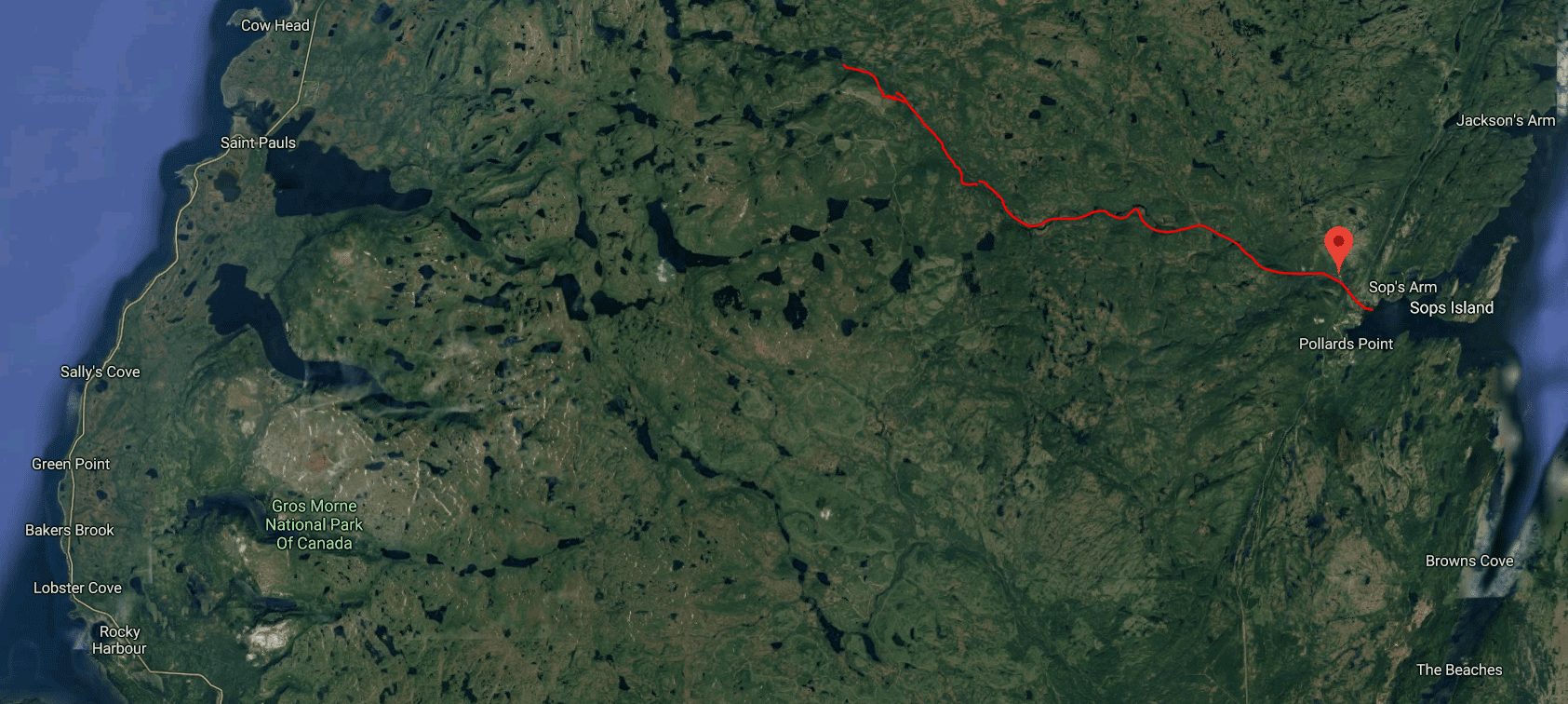Main River Whitewater Paddling
The Main River is considered the last true wilderness river in Newfoundland and unequivocally the best wilderness whitewater paddling venue on the island.

With a fully intact watershed and a type of remoteness that keeps all but the most determined adventurers away, Newfoundland’s Main River is known for old growth boreal forest, migrating Atlantic salmon, endangered species like the pine marten, and when the water levels are high, outstanding Newfoundland whitewater paddling.
Located on the south-east portion of the Great Northern Peninsula, the closest community to the river is the town of Sop’s Arm, just north of the highway 420 turn-off from the Trans Canada Highway. You will know when you get to the river because the road crosses the Main River estuary where the Main River spills into the ocean. Once you cross the estuary, you will see a predominant forest service road that follows the river upstream. This is the road that takes you to the put-in (where you start your paddling adventure), approx 23 kilometers upstream. The forest service road is rough but can be navigated in most vehicles, as long as you take your time. Don’t be alarmed if it feels like you’re not next to the river as you drive up the road. Since the majority of the lower Main River runs through a canyon feature, the access road diverges from the shoreline and only meets the Main River at the put-in, a tall elevated metal bridge that crosses the Main River at the 23 kilometer mark.
 The Main River is a rain feed and snow melt river. What this means is, if you’re looking to paddle it, the water needs to be high – at least
The Main River is a rain feed and snow melt river. What this means is, if you’re looking to paddle it, the water needs to be high – at least
75 cubic meters per second. The most popular time to paddle the Main River is in the spring during the first three weeks when the snow starts to significantly melt. This isn’t necessarily the best time to paddle the Main River since the water is cold and it’s still cooler outside in late May and the beginning of June, but commercial operators often choose these dates since it’s almost a guarantee the water will be high at that time of year, making the river easily runnable.
One of the best times to paddle the Main River is in the summertime, following a significant rain, and when we say significant rainfall, we mean it. An afternoon shower isn’t going to make the water levels rise much, but when you see the mid-summer monsoon style rainfall for a day or two, you can feel confident the water levels in the Main River will rise to optimal paddling conditions within 24 to 48 hours following the rainfall, the optimal window.
The lower section of the Main River is classed as grade 2 and grade 3 whitewater paddling through pristine Newfoundland old-growth forest. The 23 kilometer downstream paddle from the put-in to the Main River Estuary is consistent whitewater, which means losing your boat if you swim is a real concern. There are eddies along the way and a great lunchtime riverside sandbar at the halfway mark, but don’t expect any sections of flat water. The paddle down the Main River takes approximately 4 hours to complete if you’re not taking many breaks, but most people make a day of it, and if you leave reasonably early in the morning, it’s easy to take your time. Alternatively, whitewater enthusiasts sometimes will paddle the Main River twice in a day to take advantage of optimal conditions, but 46 kilometers of consistent whitewater paddling is a lot for one day.
Canoeists, whitewater kayakers, and rafters can all be found enjoying Newfoundland’s Main River whitewater paddling. If you’re new to paddling and want to experience paddling the Main River, your best option is joining a commercial rafting trip which is almost exclusively offered in the spring. If you plan on kayaking, we want to be clear that this is a whitewater river and therefore suitable for whitewater kayaks, not sea kayaks. If you are paddling in a canoe, be sure it’s a canoe that’s suitable for whitewater and is outfitted for the same.
Helmets, PFD’s, and wetsuits are all highly recommended (it would be reckless to paddle without them).
Paddle in a group and paddle within your ability since, as you probably know, rivers are really good at letting you know when you’ve bitten off more than you can chew.
If you’re looking for river paddling that’s calm, meandering, and more suitable for sea kayaks and paddleboards, Newfoundland’s Main River isn’t the best choice for you, but there’s lot’s of other Newfoundland River’s that are perfect for lazy day paddling. Choose to paddle the Humber River near Corner Brook or paddle the Terra Nova River in Terra Nova Provincial Park for calmer moving water suitable for beginners or check out our many inland lakes, ponds, and waterways. With so much freshwater in Newfoundland along with thousands of miles of Atlantic ocean coastline, there’s something for everyone.





